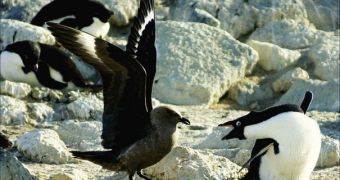Scientists from the Lund University Vision Group recently discovered that birds require between 5 and 20 times as much light as the human eye does in order to perceive colors. As a direct result, their color vision decays much earlier in the day than our own, for example. More precisely, the experts determined that, as early as twilight, most bird species become unable to sense colors in the landscape they are flying over, AlphaGalileo reports.
For many years, birds have passed for some of the most endowed animals when it came to vision. They are able to resolve smaller details at a farther distance than the human eye can, and are also capable of seeing some ultraviolet light frequencies, which we cannot do at all. However, the new discovery means that the entire body of research that was conducted on the animals' eyes is rendered obsolete except for bright, Sun-lit conditions. All their amazing abilities are lost even before evening sets in.
“Using behavioral experiments we can now demonstrate that birds lose their color vision in the twilight and show just how much light is needed for birds to be able to interpret color signals,” LU Department of Cell and Organism Biology doctoral candidate Olle Lind explains. When compared to a large number of other animal species, including humans, horses, and geckos, birds proved to be the ones that lost their color vision first. Geckos are the most adapted at seeing during the night, when they can also make out colors.
The results were very peculiar, because birds were thus proven to move from being arguably the best-adapted creatures for daytime vision to the lamest ones, shortly after the Sun sets down. “Against the background of our new discoveries, we should now re-evaluate earlier research about how birds perceive the color of their eggs and their young in the nest,” Lind adds. He reveals that most nests are dark on the inside even when the Sun is high and bright in the sky.

 14 DAY TRIAL //
14 DAY TRIAL //